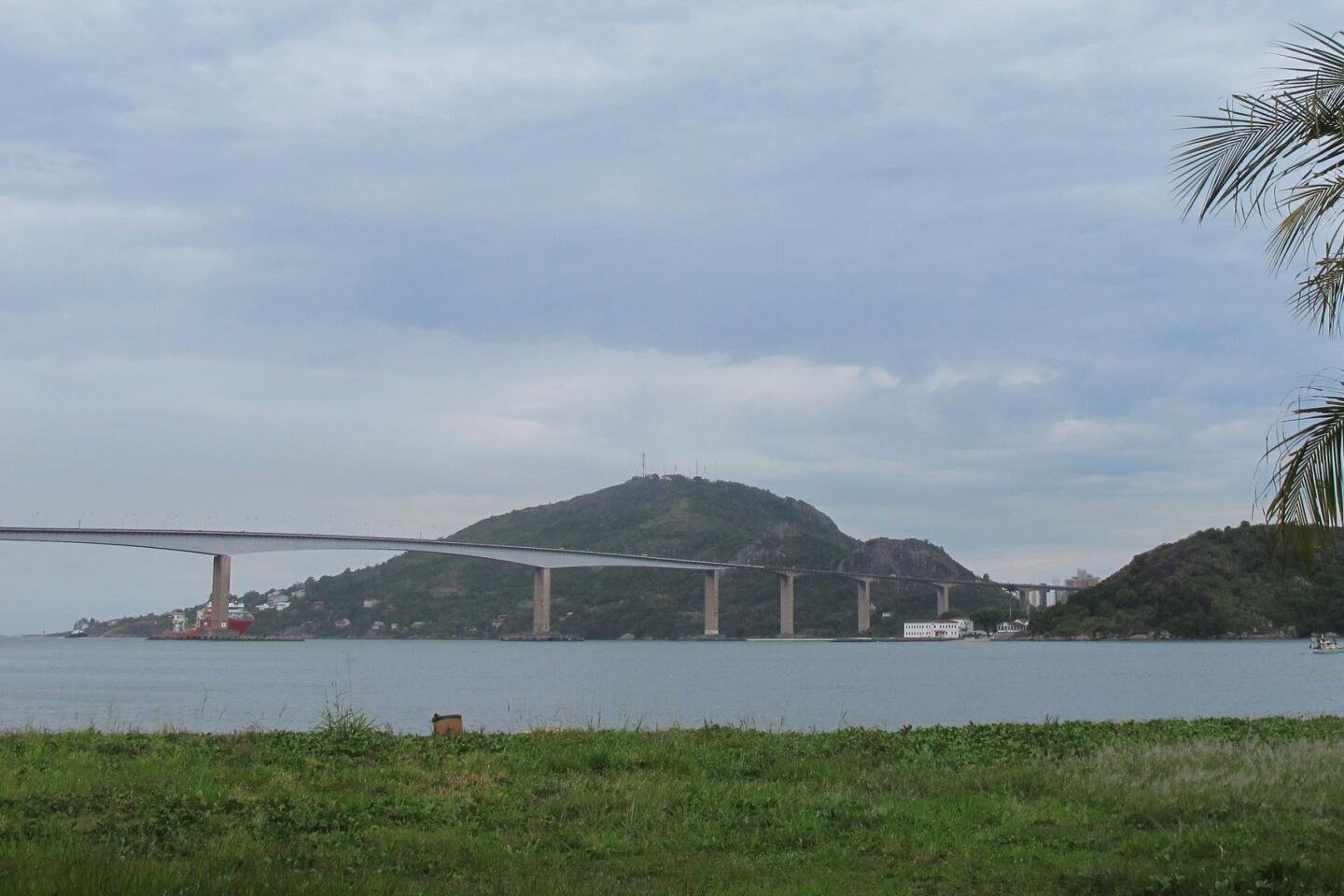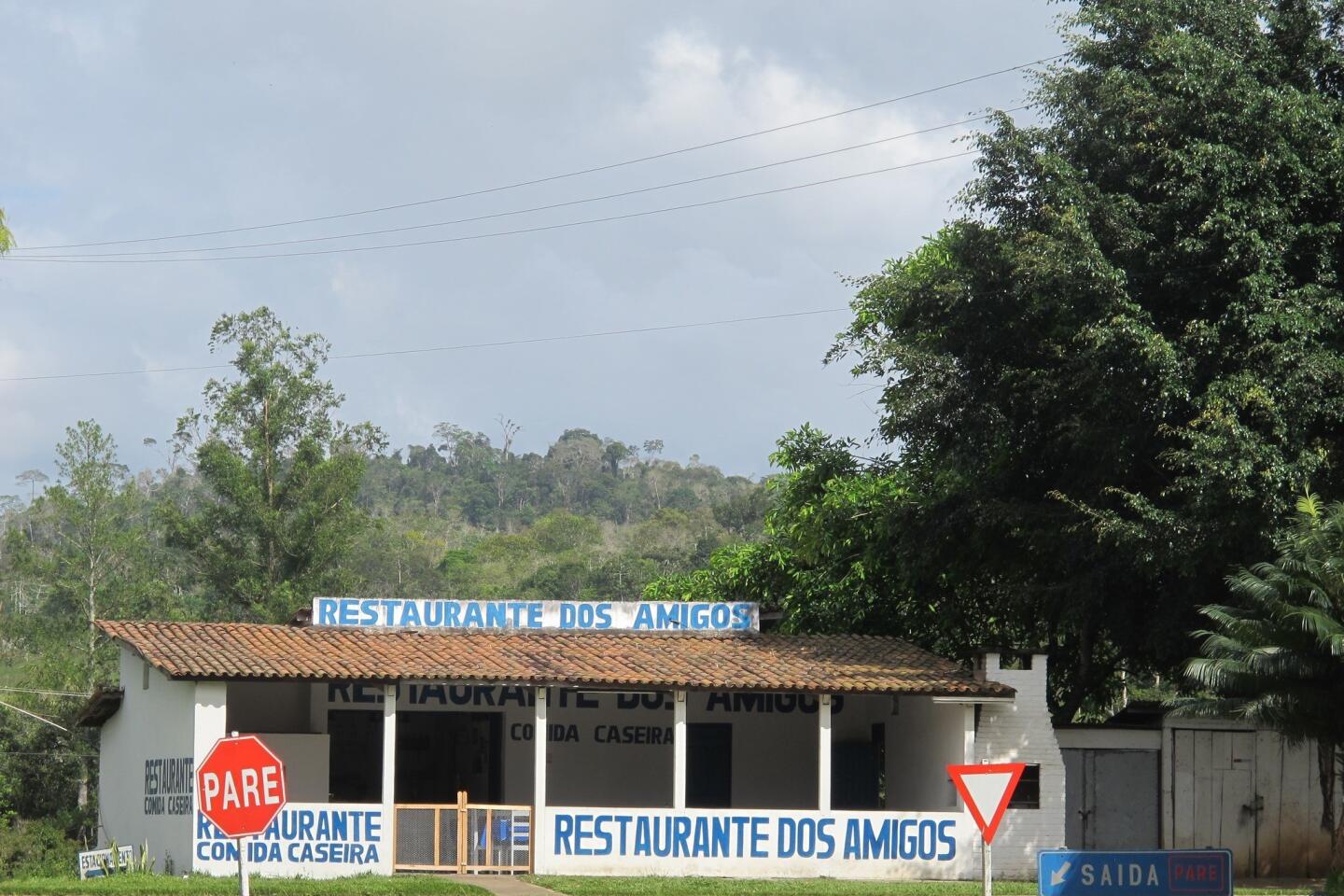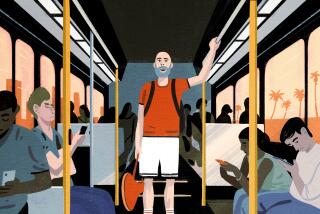Travel Brazil by bus for a calm and cheerful trip
- Share via
SAO PAULO, Brazil — After a few hours, you sink into a pleasant trance. Time no longer matters. You stop checking your phone, if it hasn’t already lost its charge. You’re comfortable. Your mind settles into the little there is to do — think, maybe read a book or, of course, watch the stunning Brazilian forests and countryside pass by. Soon enough, you’ll be at one of the country’s deservedly famous tourist spots, by way of a few nice little towns no one has heard of.
Traveling through Europe by train is an elegant and relaxing alternative to flying. But traveling comfortably and relatively cheaply by bus through Brazil, a country twice the size and a bit more expensive than the European Union, is a well-kept secret.
These are not buses on which chickens compete for space with three humans on a seat made for two schoolchildren, and they aren’t just for budget travelers. Air-conditioned and with plush seats that can recline almost completely, they are a calm alternative to the hustle and bustle of the country’s expensive and messy airlines. I almost always prefer to move around my adopted home country by land, and a visitor with two weeks can easily move among some of its best spots at a leisurely pace and, more important, see what’s in between those spots.
On my way to a recent assignment, I took a version of this trip, leaving São Paulo, South America’s largest city and cultural capital, for Rio and a few days on the beach, then to the state of Espírito Santo, famous for its mountain forests and hiking, and finally to Salvador, Brazil’s former colonial capital and current capital of Bahia, center of Afro-Brazilian culture.
The journey to Rio is six hours or so, so I wandered into the Terminal Rodoviario Tiete bus station sometime between 11 p.m. and 2 a.m. for the overnight trip. The terminal is quite safe, with places to get food or sit and watch TV as you wait for your bus. Planning is not required — another huge advantage to bus travel in Brazil. Just arrive about 20 minutes before a scheduled departure, and you can usually get a row of soft seats to yourself. In Brazil, it is near impossible for foreigners to buy a ticket online for a local airline flight (you must use a Brazilian credit card), and a last-minute ticket goes for more than $400, or about 10 times the price of a bus ticket.
I looked forward to the bus ride. The world became quiet and dark. I slept for most of the trip, awakening in the morning as the bus slowly descended a small mountain, the thick, bright-green forest just visible through the mist. Rio and São Paulo sit within the Mata Atlântica, or tropical Atlantic Forest, but because it was cleared away to build them, it’s tough for most visitors to notice.
The natural beauty of Rio is overpowering — it probably is the one must-see city in Brazil. The standard tourist traps are usually the right ones — caipirinhas or coconut juice on the sand at Ipanema, and the trip to see Christ the Redeemer is well worth it if the day is clear. I spent the mornings reading on the beach and bodysurfing in the warm waters, and the afternoon strolling downtown and having dinner and drinks at Amarelinho, a restaurant and bar marked by its yellow plastic chairs in the Praça Floriano, a grand European-style square adjacent to the City Hall and gilded Municipal Theater.
The weather was good, so I stayed a few days longer than planned. Then it was on to Vitória, one of Brazil’s better-off cities, about seven hours on dry dirt roads up the coast in Espírito Santo. The bus stopped in tiny villages for snacks — mostly unhealthful, delicious road fare such as chicken coxinhas — as well as an array of juices.
My idea of fun in Vitória was to attend the closing party of a regional history conference at the university. But those who aren’t Portuguese-speaking Brazil nerds might want to head inland to hike among waterfalls or skip the city and head to the relaxed beaches of Porto Seguro, where the Portuguese discovered Brazil. Or pick any other little beach city on the map and go there. The bus will take you.
The trip to Salvador, Brazil’s third-largest city, was more of a trek. It can be done in 10 hours from São Paulo, but my intentionally winding route took 22. I can’t say I was in any rush. The seat was as comfortable as any in my home, and the views were more interesting. The road wove inland through parched, dry lands that reminded me of the American Wild West and then through untamed forests closer to the ocean.
Life on the bus took on a certain jovial character — everything is well-regulated and safe on these routes despite the persistent crime in Brazil — and friends were made. There were teenagers who tried to look tough when they first boarded but soon snoozed and started to drool. The Norwegian tourist whose different manner of speaking wasn’t noticed much by the 8-year-old boy he played with for hours. The driver who took advantage of his position to encourage us to stay true to God as we descended the steps for a breakfast of thick, hot tripe stew (or toast and orange juice, if that’s your thing).
The state of Bahia is about as far culturally from São Paulo as is possible within a single country. People are relaxed and take things slowly, and the food takes its cues from West Africa. Once in Salvador I stopped to eat acarajé, the fried black-eyed peas nearly identical to the Nigerian dish, served with shrimp and fiery salsa.
As I headed to the beach, I was surrounded by cheerful militants of the ruling left-leaning Worker’s Party. “Vote for the party of the man that saved Brazil!” they yelled, referring to former President Luiz Inácio “Lula” da Silva.
Every Saturday night, the Museum of Modern Art opens the gates to its huge seafront patio for a night of Bahian jazz. For $5, artistic types and music fans gather, then perhaps head to parties in the more upscale Rio Vermelho region, where the culture is also defiantly local.
“Here in Bahia, all of our music is Bahian,” said David Araujo, a young graphic designer and artist, speaking over the music and the sound of the ocean, “unlike São Paulo, where their rock or techno or country music comes from other places.”
Which is perfect for me, while I’m here. My bus leaves in the morning.
More to Read
Sign up for The Wild
We’ll help you find the best places to hike, bike and run, as well as the perfect silent spots for meditation and yoga.
You may occasionally receive promotional content from the Los Angeles Times.












